I have used an Existing WSDL to create an Experience API where I am performing several steps before either:
- Passing the SOAP Request Message as-is to the Original Backend System using Mule4 Web Service Consumer or
- Calling another Backend System (RESTful API) and transforming the Response to match the Expected SOAP Response Message
Sample Message
<env:Envelope xmlns:env="http://www.w3.org/2003/05/soap-envelope" xmlns:ns="urn:Acme/PublicService/V1" xmlns:ns0="urn:/Acme/BasicDataPublicService/V1" xmlns:xsi="http://www.w3.org/2001/XMLSchema-instance">
<env:Header>
<a:Action s:mustUnderstand="1" xmlns:a="http://www.w3.org/2005/08/addressing" xmlns:s="http://www.w3.org/2003/05/soap-envelope">urn:Acme/PublicService/V1/PublicService/SetCustomer</a:Action>
<a:MessageID xmlns:a="http://www.w3.org/2005/08/addressing">urn:uuid:4afe0693-adea-4ede-bec9-10b694708d85</a:MessageID>
<a:ReplyTo xmlns:a="http://www.w3.org/2005/08/addressing">
<a:Address>http://www.w3.org/2005/08/addressing/anonymous</a:Address>
</a:ReplyTo>
<VsDebuggerCausalityData xmlns="http://schemas.microsoft.com/vstudio/diagnostics/servicemodelsink">uIDPo8KxyyGpakdIj8o84JOeAMsAAAAAQBkt3vfAK0C4dDgn3rAKx/iXgqYosnhKv/OHgph9cXoACQAA</VsDebuggerCausalityData>
<a:To s:mustUnderstand="1" xmlns:a="http://www.w3.org/2005/08/addressing" xmlns:s="http://www.w3.org/2003/05/soap-envelope">http://316.820.517.311:36990/PublicInterface/Service</a:To>
<AuthorizationToken xmlns="urn:Acme/Authorization/V1" xmlns:i="http://www.w3.org/2001/XMLSchema-instance">
<CultureName>uk-UK</CultureName>
<OnBehalfOf i:nil="true"></OnBehalfOf>
<Password>****</Password>
<UserName>sa-ACME</UserName>
</AuthorizationToken>
</env:Header>
<env:Body>
<ns:SetCustomer>Muli-Tier Message</ns:SetCustomer>
</env:Body>
</env:Envelope>
According to Mulesoft KB; this requires additional Transformation steps in the beginning of the flow. Passing the SOAP Body is not an issue; the SOAP Header is a pickle, however. Especially since the KB document is hard-coding the values; while in my case these need to be dynamic (i.e. coming from the Original SOAP Request message).
I tried mapping the Header Parameters to a Variable as described but I cannot seem to get to it.
Option 1 Mapping the Header Elements to Children Attributes of a Variable, results in the Variable Storing Null
%dw 2.0
output application/xml writeDeclaration=false, writeNilOnNull=true
ns ns0 http://www.w3.org/2005/08/addressing
ns s http://www.w3.org/2003/05/soap-envelope
---
headers: {
ns0#Action @(s#mustUnderstands: payload.headers.Action.@mustUnderstands): payload.headers.Action as String default null,
ns0#MessageID: payload.headers.MessageID as String default null,
ns0#ReplyTo: {
ns0#Address: payload.headers.ReplyTo.Address as String default null
},
VsDebuggerCausalityData: payload.headers.VsDebuggerCausalityData as String default null,
ns0#To @(s#mustUnderstands: payload.headers.To.@mustUnderstands): payload.headers.To as String default null,
AuthorizationToken: {
CultureName: payload.headers.AuthorizationToken.CultureName as String default null,
OnBehalfOf: payload.headers.AuthorizationToken.OnBehalfOf as String default null,
Password: payload.headers.AuthorizationToken.Password as String default null,
UserName: payload.headers.AuthorizationToken.UserName as String default null
}
}
Option 2 Mapping payload.headers to a Variable, results in extra tags; and losing the XML Tag attributes
%dw 2.0
output application/xml writeDeclaration=false, writeNilOnNull=true
ns ns0 http://www.w3.org/2005/08/addressing
ns s http://www.w3.org/2003/05/soap-envelope
---
headers: payload.headers


